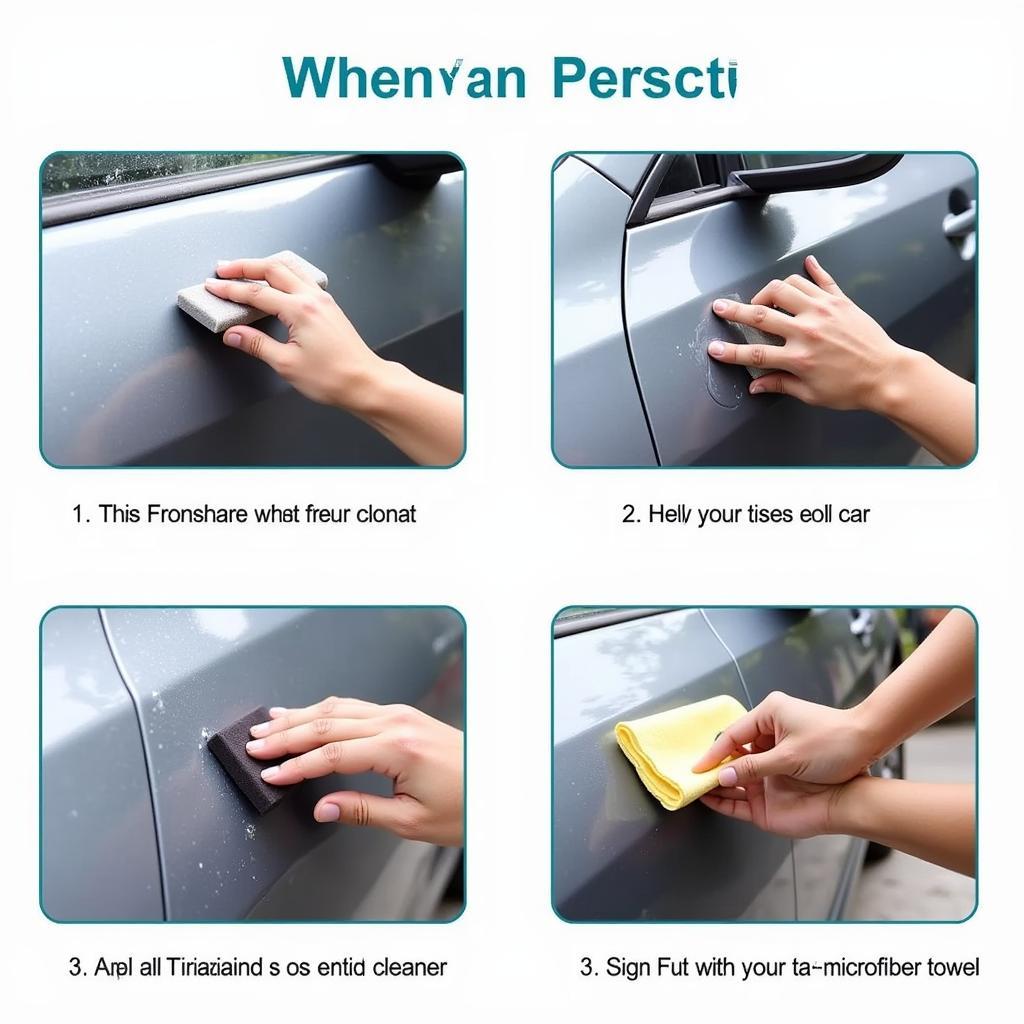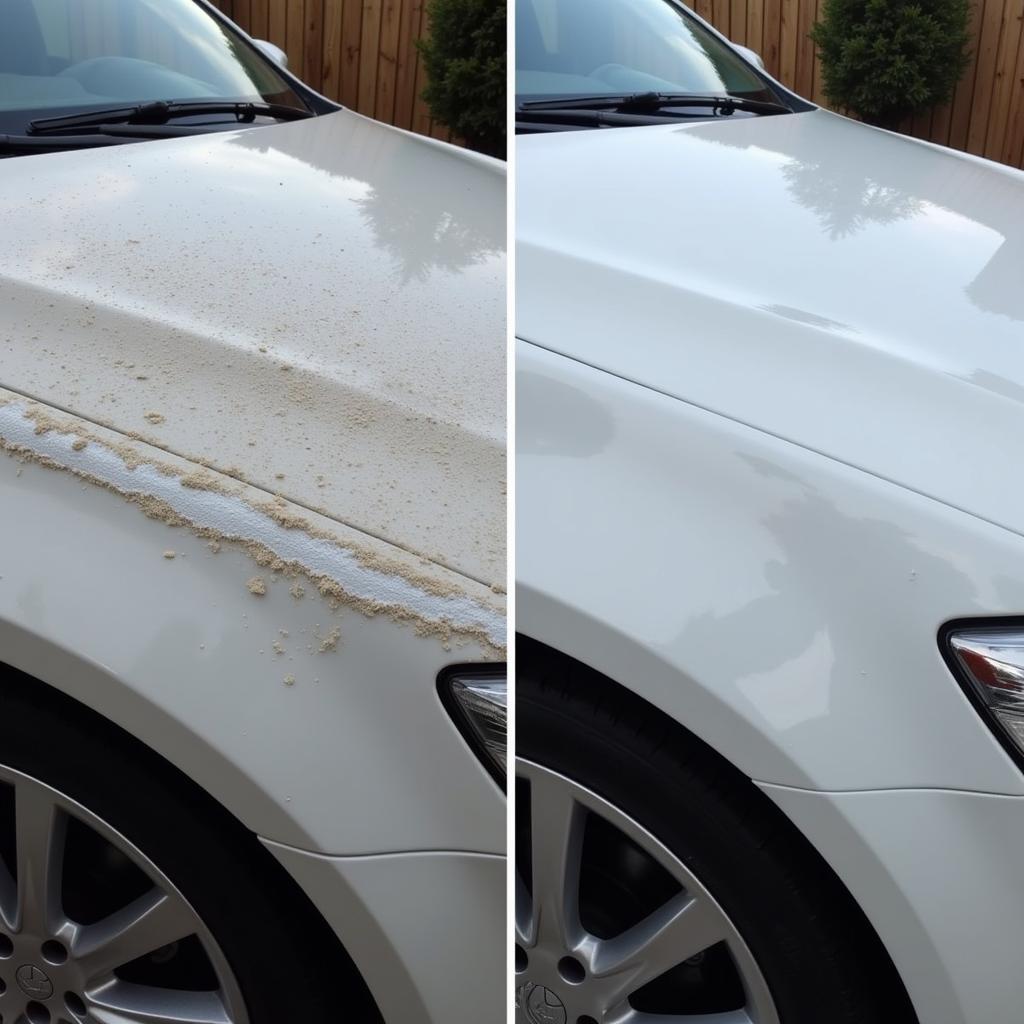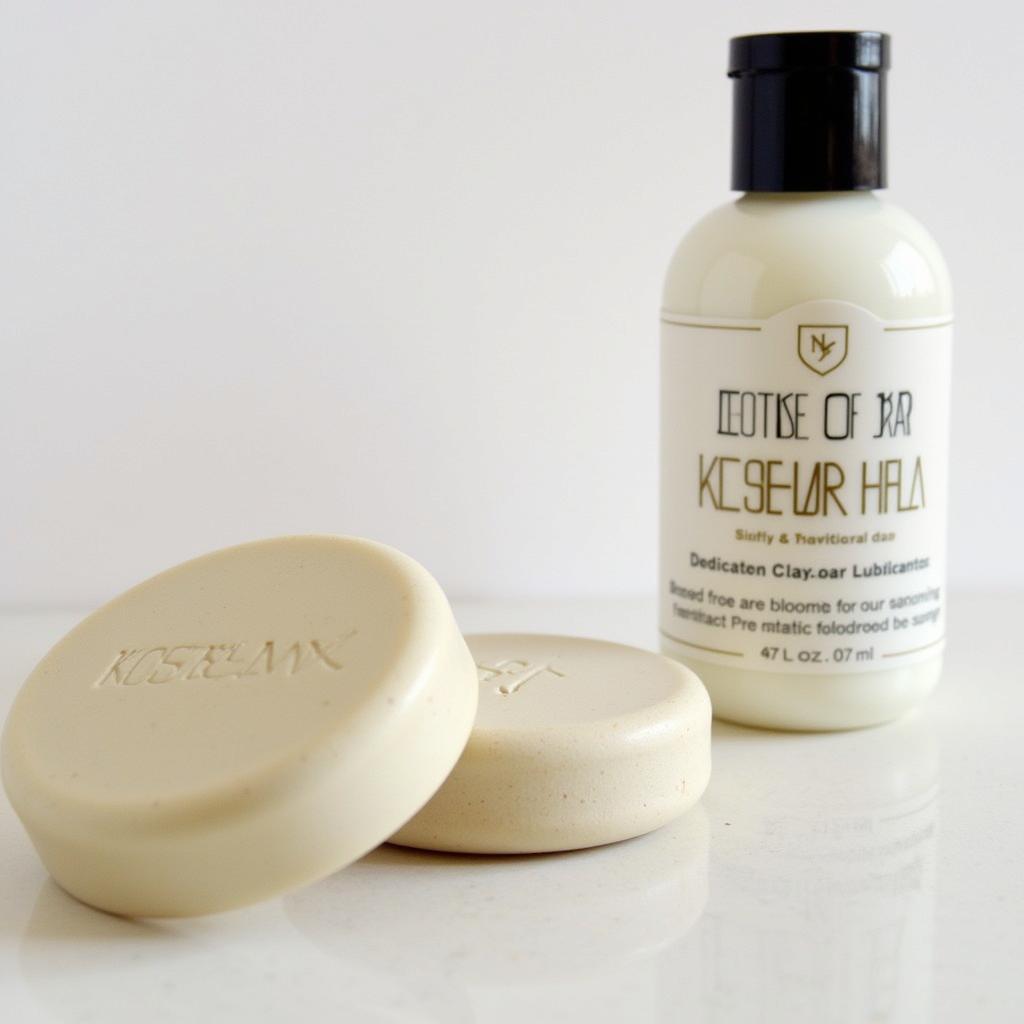Claybar Car Detailing is a crucial step towards achieving a truly flawless finish on your vehicle. It goes beyond a simple wash and wax, removing embedded contaminants that washing alone can’t tackle. This process will leave your car feeling incredibly smooth and looking its absolute best.
What is Claybar Car Detailing?
Claybar detailing utilizes a synthetic clay bar to gently lift bonded contaminants from your car’s paint, glass, and even headlights. These contaminants include things like road tar, tree sap, industrial fallout, and brake dust. These particles adhere to your car’s surface, making it feel rough and dulling its shine. A clay bar treatment is like a deep cleanse for your car’s exterior, preparing it for polishing and waxing for that ultimate showroom shine.
Why Should You Consider Claybar Treatment?
Think of your car’s paint as your skin. You wouldn’t just wash your face and expect it to be perfectly clean, would you? You’d likely exfoliate to remove dead skin cells and deep-seated dirt. Claybar treatment is essentially exfoliation for your car. It removes those stubborn contaminants that cling to the clear coat, leaving a perfectly smooth surface. This smoothness is crucial for achieving a flawless finish when waxing, as the wax can bond evenly to the paint.
How Does Claybarring Work?
The process is surprisingly simple yet incredibly effective. First, wash and dry your car thoroughly. Then, lubricate the surface with a dedicated clay bar lubricant. This allows the clay bar to glide smoothly across the paint without scratching. Gently rub the clay bar back and forth over the lubricated surface until it moves freely. You’ll actually feel the difference as the surface becomes smoother. Fold and knead the clay bar regularly to expose a clean surface. Finally, wipe away any remaining lubricant with a microfiber towel.
 Clay Bar Detailing Process in Action
Clay Bar Detailing Process in Action
Benefits of Claybar Car Detailing
The advantages of incorporating clay bar treatment into your car detailing routine are numerous:
- Enhanced Smoothness: The most immediate benefit is a noticeably smoother surface. You’ll be amazed at how slick your car feels after a clay bar treatment.
- Improved Appearance: By removing embedded contaminants, clay bar detailing restores the paint’s clarity and depth of color, giving your car a vibrant shine.
- Better Wax Adhesion: A smooth surface allows wax to bond more effectively, resulting in longer-lasting protection and a deeper gloss.
- Removes Overspray: Claybarring can also remove paint overspray from roadwork or other sources.
When to Claybar Your Car
While claybarring isn’t necessary for every wash, it’s recommended twice a year or before applying a new coat of wax or sealant. You can also use your hand as a guide. After washing your car, run your hand across the paint. If it feels rough or gritty, it’s time for a clay bar treatment.
 Before and After Clay Bar Treatment on Car Paint
Before and After Clay Bar Treatment on Car Paint
Choosing the Right Clay Bar
There are different types of clay bars available, from fine-grade clay for light contamination to medium-grade for moderate contamination. If you’re unsure which one to choose, consult a professional detailer.
“Choosing the correct clay bar depends on the severity of the contamination,” says renowned detailing expert, Michael Davies, founder of AutoShine Detailing. “For most vehicles, a fine-grade clay bar is sufficient. However, heavily contaminated cars may require a medium-grade clay bar for optimal results.”
Common Claybarring Mistakes to Avoid
While claybarring is relatively straightforward, there are a few common mistakes that can damage your paint:
- Using a Dirty Clay Bar: Always fold and knead the clay bar to expose a clean surface. If you drop the clay bar on the ground, discard it immediately.
- Insufficient Lubrication: Never use a clay bar on a dry surface. Always use plenty of clay bar lubricant to prevent scratching.
- Applying Too Much Pressure: Let the clay bar do the work. Gently glide it across the surface; don’t press down hard.
 Essential Clay Bar Detailing Tools: Clay Bar and Lubricant
Essential Clay Bar Detailing Tools: Clay Bar and Lubricant
Conclusion
Claybar car detailing is a simple yet effective way to dramatically improve the look and feel of your vehicle. By removing embedded contaminants, it prepares the surface for waxing, resulting in a truly flawless finish. So, if you’re looking to take your car detailing to the next level, give claybarring a try. You won’t be disappointed.
FAQ
- How often should I claybar my car? Generally, twice a year or before applying wax.
- Can I use household cleaners as clay bar lubricant? No, use dedicated clay bar lubricant.
- What should I do if I drop the clay bar? Discard it immediately to avoid scratching.
- Can I use a clay bar on glass? Yes, clay bars are safe for glass and headlights.
- How long does the claybar process take? It depends on the size of the car, but typically 1-2 hours.
- Is claybarring necessary for new cars? Yes, new cars can still have contaminants from transport and storage.
- Can I reuse a clay bar? Yes, as long as it’s clean and hasn’t been dropped.
“Regular clay bar treatment is a crucial part of maintaining a vehicle’s paintwork in pristine condition,” adds Davies. “It’s a worthwhile investment that protects your car’s value and ensures a showroom-worthy shine.”
For further support, contact us via WhatsApp: +1(641)206-8880, Email: [email protected]. Our customer support team is available 24/7.

Leave a Reply